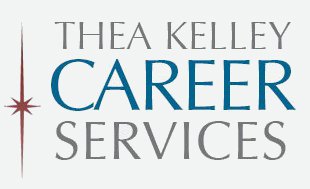 What are the must-haves for a LinkedIn profile that enhances your image and helps you advance your job search and career? Let’s look at the top priorities.
What are the must-haves for a LinkedIn profile that enhances your image and helps you advance your job search and career? Let’s look at the top priorities.
Nail these, and you’ll stand out from most of the competition, whether you’re in job search, self-employed or simply serious about career management.
1. Branding.
Know what makes you stand out – your unique brand or key selling points – and emphasize it throughout your profile. If you don’t know what makes you a great person to hire or collaborate with, how is anyone else going to figure it out?
2. A Good Professional Headline.
This is just your title and company, right? Nope. This field is one of the most important for keywords as well as a first impression, so write a more branded headline than the one LinkedIn automatically generated. An easy but effective formula is to start with your job title, then add a dash or symbol followed by a tagline or mention of one or more of your best selling points.
3. Mistake-free Writing.
The vast majority of us, even professional writers, underestimate how many mistakes we make in punctuation, capitalization, grammar and spelling. Unless you received all A’s in English (and maybe even if you did), you will probably benefit from having your profile copyedited and/or proofread by a professional. You can find a skilled pro via Yelp or freelancing sites (or by asking me for a name) who may charge less than $20 to fix those little issues. It’s definitely worth it!
4. Keywords.
What are the crucial skills, areas of expertise and designations your employers or customers will be looking for? These words and phrases need to be used appropriately throughout your profile to make it relevant. This helps your profile rank highly in search results when recruiters are looking for someone with qualifications like yours. Hint: The most important keyword is your desired job title.
5. A Reasonable Degree of Completeness.
A fully developed profile is not only more engaging but will often have better search rankings. Write an engaging and keyworded Summary (with special attention to the first few lines that show up before the user clicks for more); completely fill out the Experience, Education and Skills sections, and don’t neglect Accomplishments (Certifications, Awards, Projects and so on). Media such as images, PDFs or video are a plus, as long as they support your brand.
One area where completeness is not helpful is to list jobs you held many, many years ago that are no longer relevant or that might subject you to age discrimination. Make a strategic choice about how far back to go.
6. A Good Photo.
The online world is very visual and becoming more so all the time. A good photo builds trust and makes you more approachable and memorable. Hire a pro, or have a friend take at least 20 shots in flattering lighting (for example, outdoors in the shade, or during the hour around sunset) and pick the best one. There’s a fun app to help you select your most effective photo.
7. Connections.
The more connections you have, the more chance you have getting introduced to insiders and referred into a job. Each new connection increases your odds of being at least a third degree connection to any given recruiter, which makes it easier for her or him to access your profile and reach out to you.
8. Recommendations.
If an employer is interested in your resume, often their next step is to look at your LinkedIn profile for more clues about you, including social proof that you have the hard and soft skills they want. Ask for recommendations from colleagues and managers, which you can do by visiting their profile and clicking the “more” button to the right of their photo.
Endorsements (which show up in the Skills section) are an entirely different LinkedIn feature. These are much less crucial, although still useful to make the profile look good, and they may slightly improve your search rankings.
9. Consistency between your profile and resume.
This doesn’t mean your LinkedIn should be identical to your resume – it should not be – but the two should never contradict each other. For example, prospective employers may be suspicious when a job included on LinkedIn is omitted from your resume.
10. Plenty of skills.
You can include up to 50 skills, and there’s no reason not to include the full 50. Because these are used more for keyword matching than for the human eye, feel free to include skills that may seem a bit redundant, such as Quality Assurance, Quality Control and Quality Management. Also, don’t forget about soft skills you may have, such as Mentoring and Cross-functional Collaboration.
BONUS TIP: Following your target companies.
If you aren’t concerned about tipping off your boss, follow your target companies on LinkedIn. This can make your profile more noticeable and attractive to recruiters from those companies.
Are there only 10 or 11 important things to know about optimizing your LinkedIn profile? Of course not. This is a good start, but why not request a free consultation to talk about your specific situation and how you can best use this powerful platform to get a great job sooner?
(Editor’s Note: This post was originally published in 2015 and has been updated for accuracy.)

